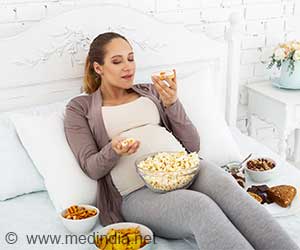Tough and biocompatible tissue adhesive that sticks to wet body tissues has been developed, binding them together for better wound healing and surgical repair.
- The moist environment of the human body poses a major challenge in developing a tissue adhesive that sticks to wet tissues and aids healing.
- Most adhesives do not stick to wet tissues well and are inflexible when dry, and many are toxic to cells.
- Novel slug inspired tissue adhesive sticks to wet tissues strongly, at the same time promoting better wound healing and surgical repair.
Anyone who has attempted to stick a Band-Aid plaster on a wet skin would have found it highly frustrating to say the least. The story is the same when it comes to developing a tissue adhesive that sticks strongly to the moist tissues within the body or skin, and that also aids in healing and repair of wounds at the same time with improved wound healing and strong stable scar.
TOP INSIGHT
Nature inspired medical glue, to promote better wound healing, could find several applications in future including creating sticky robots and novel drug delivery systems.
The Dusky Arion (Arion subfuscus), occurs commonly in Europe and parts of the United States, and when threatened, secretes a sticky glue that fixes it to the spot making it difficult to be pulled away by the predator.
Physicochemical Properties of the Slug Inspired Adhesive
Earlier studies have found this glue to be composed of a tough matrix peppered with positively charged proteins. This inspired Li and his team to develop a double-layered hydrogel composed of an alginate-polyacrylamide matrix, which in turn supports an adhesive layer that has positively charged polymers protruding from its surface.
The adhesive polymer binds to biological tissues by the following mechanisms resulting in an extremely strong bond that would be difficult to break, namely:
- Electrostatic attraction to negatively charged cell surfaces
- Covalent bonds between neighboring atoms, and
- Physical interpenetration
The current study’s matrix layer includes calcium ions that are bound to the alginate hydrogel via ionic bonds. If great stress is applied to the adhesive, these "sacrificial" ionic bonds will first break first, making the matrix absorb a large amount of energy before the tissue-polymer bond becomes compromised.
- The team tested the adhesive on a variety of both dry and wet pig tissues including skin, cartilage, liver, artery and heart, and found that their adhesive was significantly stronger than current medical adhesives.
- The team further found that more than three times the energy was needed to break the tough adhesive's bonding compared to other medical-grade adhesives and, when the bond did actually break, it was the hydrogel matrix that failed, not the bond between the adhesive and the tissue, exhibiting a high level of simultaneous high tissue adhesion strength as well as matrix toughness.
- The tough adhesive-tissue bond also remained stable when implanted into rats for two weeks, or when used to plug a hole in a pig heart and the wound strength tested by subjecting it to several rounds of mechanical inflation, deflation and stretching.
- Most importantly, it caused no tissue damage or adhesions to neighboring tissues when applied to a liver hemorrhage in mice – undesirable side effects that were noted with both a commercial thrombin-based adhesive and super glue.
Potential Applications of this Tissue Adhesive
Naturally, a strong and stable medical adhesive using a high performance material would find several applications in the medical field including:
- Use as either a patch that can be cut to desired sizes and applied to body surfaces or as an injectable solution for deeper injuries.
- To attach medical devices to their target structures, such as an actuator to improve heart function.
- Combining this technology with soft robotics to make sticky robots
- Pharmaceutical applications to make new vehicles for better drug delivery
"Nature has frequently already found elegant solutions to common problems; it's a matter of knowing where to look and recognizing a good idea when you see one," says Wyss Founding Director Donald Ingber, who is also the Judah Folkman Professor of Vascular Biology at Harvard Medical School and the Vascular Biology Program at Boston Children's Hospital, as well as a Professor of Bioengineering at Harvard's School of Engineering and Applied Sciences. "We are excited to see how this technology, inspired by a humble slug, might develop into a new technology for surgical repair and wound healing."
References:
- J. Li, A. D. Celiz, J. Yang, Q. Yang, I. Wamala, W. Whyte, B. R. Seo, N. V. Vasilyev, J. J. Vlassak, Z. Suo, D. J. Mooney. Tough adhesives for diverse wet surfaces. Science, 2017; 357 (6349): 378 DOI: 10.1126/science.aah6362
 MEDINDIA
MEDINDIA

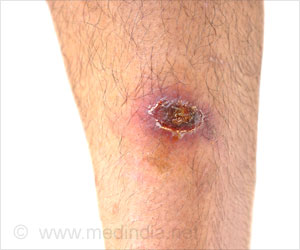
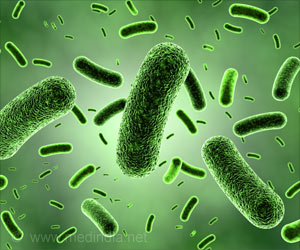
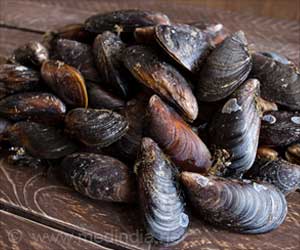
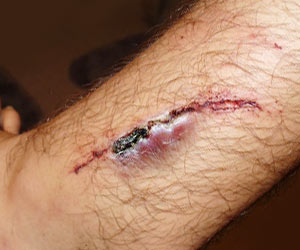
 Email
Email


